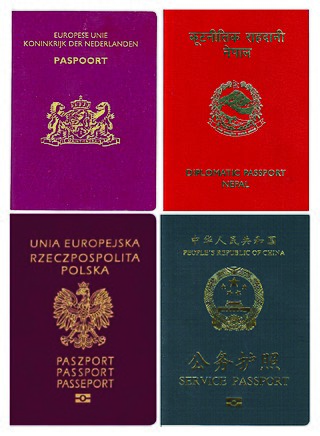
A passport is an official travel document issued by a government that contains a person's identity for international travel. A person with a passport can travel to and from foreign countries more easily and access consular assistance. A passport certifies the personal identity and nationality of its holder. It is typical for passports to contain the full name, photograph, place and date of birth, signature, and the issue and expiration dates of the passport. While passports are typically issued by national governments, certain subnational governments are authorised to issue passports to citizens residing within their borders.

A visa is a conditional authorization granted by a polity to a foreigner that allows them to enter, remain within, or leave its territory. Visas typically include limits on the duration of the foreigner's stay, areas within the country they may enter, the dates they may enter, the number of permitted visits, or if the individual can work in the country in question. Visas are associated with the request for permission to enter a territory and thus are, in most countries, distinct from actual formal permission for an alien to enter and remain in the country. In each instance, a visa is subject to entry permission by an immigration official at the time of actual entry and can be revoked at any time. Visa evidence most commonly takes the form of a sticker endorsed in the applicant's passport or other travel document but may also exist electronically. Some countries no longer issue physical visa evidence, instead recording details only in immigration databases.

A biometric passport is a traditional passport that has an embedded electronic microprocessor chip, which contains biometric information that can be used to authenticate the identity of the passport holder. It uses contactless smart card technology, including a microprocessor chip and antenna embedded in the front or back cover, or centre page, of the passport. The passport's critical information is printed on the data page of the passport, repeated on the machine readable lines and stored in the chip. Public key infrastructure (PKI) is used to authenticate the data stored electronically in the passport chip, supposedly making it expensive and difficult to forge when all security mechanisms are fully and correctly implemented.

The Permanent Resident card is an identification document and a travel document for permanent residents of Canada. It is one of the methods by which Canadian permanent residents can prove their status and is, along with the permanent resident travel document (PRTD), one of the only documents that allow permanent residents to return to Canada by a commercial carrier.
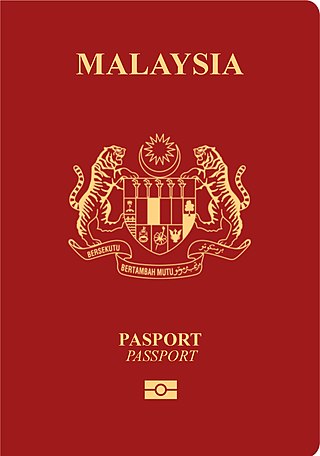
The Malaysian passport is the passport issued to citizens of Malaysia by the Immigration Department of Malaysia.

A travel document is an identity document issued by a government or international entity pursuant to international agreements to enable individuals to clear border control measures. Travel documents usually assure other governments that the bearer may return to the issuing country, and are often issued in booklet form to allow other governments to place visas as well as entry and exit stamps into them.

The Singapore passport is a travel document and passport issued to citizens and nationals of the Republic of Singapore. It enables the bearer to exit and re-enter Singapore freely; travel to and from other countries in accordance with visa requirements; facilitates the process of securing assistance from Singapore consular officials abroad, if necessary; and requests protection for the bearer while abroad.

An Indonesian passport is a travel document issued by the Government of Indonesia to Indonesian citizens residing in Indonesia or overseas. The main governing body with regards to the issuance of such passport(s), possession(s), withdrawal and related matters is the Directorate General of Immigration under the Ministry of Law and Human Rights. Indonesia does not recognize multiple citizenship for its citizens and such citizens will automatically lose their Indonesian citizenship if another citizenship is acquired voluntarily. Special exceptions allow newly born citizens to hold dual nationalities until his/her eighteenth birthday after which a choice of either nationalities should be decided. The latest Indonesian passport has different national birds and sceneries on each page.

A German passport is an identity document issued to nationals of Germany for the purpose of international travel. A German passport is, besides the German ID card and the German Emergency Travel Document, the only other officially recognised document that German authorities will routinely accept as proof of identity from German citizens. Besides serving as proof of identity and presumption of German nationality, they facilitate the process of securing assistance from German consular officials abroad. German passports are valid for ten years or six years and share the standardised layout and burgundy red design with other EU passports. Every German citizen is also a citizen of the European Union. The passport, along with the national identity card, allows for free rights of movement and residence in any of the states of the European Union, European Economic Area and Switzerland.
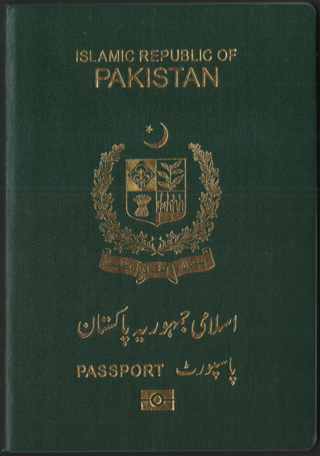
The Pakistani passport is a passport granted by the Government of Pakistan to its citizens for international travel purposes. The Directorate General of Immigration & Passports holds the responsibility for passport issuance, under the regulation of the Ministry of Interior.

Vietnamese passports are issued to citizens of Vietnam to facilitate international travel. They enable the bearer to exit and re-enter Vietnam freely; to travel to and from other countries in accordance with visa requirements, and secure assistance from Vietnamese consular officials when abroad, if necessary.

The Brazilian passport is the official document for foreign travel issued by the federal government, through the Federal Police.
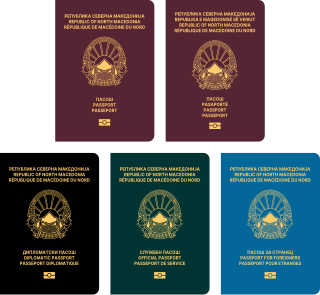
North Macedonian passports are issued to citizens of North Macedonia for the purpose of international travel. Responsibility for their issuance lies with the Ministry of the Interior. The validity of the passport is 5 years for persons 4 to 27 years of age and 10 years for those 27 years of age and older. For children ages four and under, the validity of the passport is limited to two years. The passports conform to the recommended standards of the International Civil Aviation Organization (ICAO), and are biometric passports.

The passport of the Republic of Lebanon is a passport issued to the citizens of the Republic of Lebanon to enable them to travel outside the Republic of Lebanon and entitles the bearer to the protection from the diplomatic missions and consulates of the Republic of Lebanon if necessary. It is issued exclusively by the Lebanese Directorate General of General Security (DGGS), and can also be issued at various Lebanese diplomatic missions and/or consulates outside the Republic of Lebanon. It allows the bearer a freedom of living in the Republic of Lebanon without any immigration requirements, participate in the Lebanese political system, entry to and exit from the Republic of Lebanon through any port, travel to and from other countries in accordance with visa requirements, facilitates the process of securing consular assistance abroad from the diplomatic missions and consulates of the Republic of Lebanon if necessary, and requests protection for the bearer while abroad.
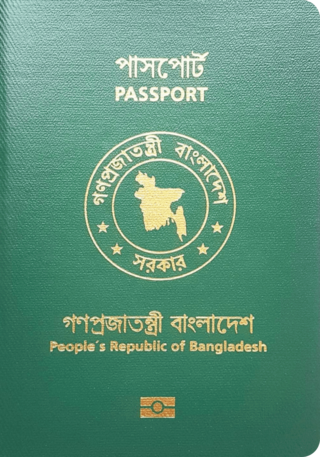
The passport of Bangladesh is an ICAO compliant, machine-readable and biometric e-passport issued for the purpose of travel to foreign countries by the passport holder. Bangladesh is the first country in South Asia to issue e-passports for all eligible citizens. The passport booklet is manufactured, printed and issued by the Department of Immigration & Passports of the Ministry of Home Affairs. This electronic microprocessor chip embedded e-passport has forty-one different security features, including holographic images embossed in thin-film laminate, which change colour under light and appear to move. Demographic and biometric information of the e-passport holder are stored on the chip inside the e-passport. This information includes the fingerprints of all ten fingers of the passport holder; the iris scan of both eyes; a color photograph of the face of the bearer; their digital signature; etc. Depending on the age of the applicant, the e-passport is valid for either five years or ten years and it is distributed by the Government of The People's Republic of Bangladesh, or by any of its overseas diplomatic missions, to eligible Bangladeshi nationals who are citizens by birth, by descent or through naturalization.

A Barbados passport is a travel document issued to citizens of Barbados, in accordance with Citizenship Act from 1978, the Immigration Act from 1997, and the Barbados Constitution, for the purpose of facilitating international travel. It allows the bearer to travel to foreign countries in accordance with visa requirements, and facilitates the process of securing assistance from Barbados consular officials abroad, if necessary.

Maldivian passport is a proof of citizenship, issued by Maldives Immigration, to all the nationals of the Maldives for international travel. The current passport, the 2nd generation e-passport, was launched on 24 January 2016. This passport consists of a highly secured poly-carbonate data page with laser engraved photo and data. Each visa page of the passport has a different design, represented with numerous illustrations by the Maldivian local artist, Hussain Ali Manik. A Maldivian Passport can be issued to any Maldivian citizen who applies for a passport.

The Tanzanian passport is issued to citizens of the United Republic of Tanzania for international travel. The Immigration Department is responsible for the issuance of Passports for the purpose of international travel.

The German Identity Card is issued to German citizens by local registration offices in Germany and diplomatic missions abroad, while it is produced at the Bundesdruckerei in Berlin.

An Interpol Travel Document is a travel document issued to Interpol officers for travel to Interpol member countries. They are intended to reduce response times for personnel deployed to assist with transnational criminal investigations, major events or emergency situations by waiving normal visa requirements.
























